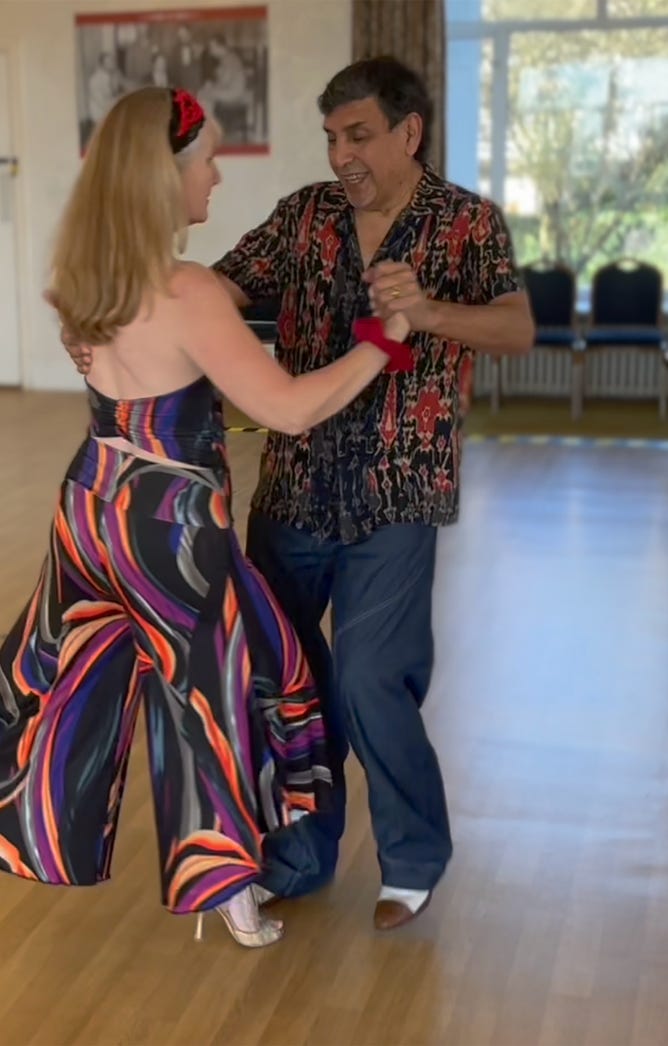taught by Leo & Tracey of
TANGO FANDANGO professional dancers
& teachers of Argentine Tango
The Argentine Tango encompasses 6 different styles.
They are:
Tango Canyengue
Tango Orillero
Tango Milonguero
Tango Salon
Tango Nuevo
Fantasia
Argentine Tango Nuevo
Developed during the re-emergence of the Argentine Tango in the 1980s. Leo was living in Buenos Aires during this period and experienced the revolution of the Nuevo movement first hand as he regularly frequented the milongas!
The old Milongueros gave their knowledge to the younger generation who took old techniques and expanded them to create a more dynamic and fluid style. At that period, Nuevo was danced to extremely varied music including tracks of Piazzolla, Pugliese, Di Sarli and Mederos but now includes more recent bands such as Gotan project, Bajofondo, Otras Aires, Tanghetto etc.
The important thing to remember is that Argentine Tango is a cultural dance that changes continually with the times. It should not be considered as a dance that is ‘stuck in a bubble’, it breathes and changes to reflect the current climate and is an important part of society and the ever changing dance world. Nuevo Tango is danced to music created for the Tango, whether it is old or modern, it is not a blend of dance styles danced to any track.
There is a common misconception that everything in Tango is ‘Tango Salon’. It’s called ‘Salon’ because it’s danced in a ballroom or ‘salon’. It does not mean there are not styles and Nuevo Tango is a ‘style’ of Argentine Tango that has a different character to other ‘styles’ of Argentine Tango.
What characterises Tango Nuevo?
Nuevo Argentine Tango is a more informal, relaxed style of dancing. The embrace can be open or closed but the lines described are more extended or exagerated and the movement becomes a little more obvious.
It’s more focused in the mechanic of the body than the feelings and it tries to bring out the dynamic lines and is more playful with the angles, speed and distances.
Many of the old figures or tricks of the old are used - for example, coladas and volcadas but they look far more dynamic and open than previously danced. This could be the influence of the contemporary dance. More information can be found on the TangoFandango website or by reading the Tango Fandango Blog post of Leo’s personal experience of the Nuevo revolution in Buenos Aires HERE.


The video was shot at the London Waldorf Hilton at the Tango Supper which Leo & Tracey recreated for 5 years starting in 2010. The first song shows the Nuevo/Fantasia style to a Milonguero track, although as usual it’s an improvisation!

This video shows Tango descriptions of the improvised movements that Leo uses during a typical dance. You will see that the movements are a little more dynamic because they are in a more open hold.
The track is by Daniel Melingo.
Leo and Tracey teach all the styles of Argentine Tango.
If you are interested in learning more about this style or any of the others, then contact them via Facebook, email info@tango-fandango.co.uk or visit their website www.tango-fandango.co.uk for details of their weekly classes throughout Dorset and Hampshire or their workshops across the UK.
Private lessons of Tango Nuevo are available on request.
To learn more - get in touch with Leo & Tracey